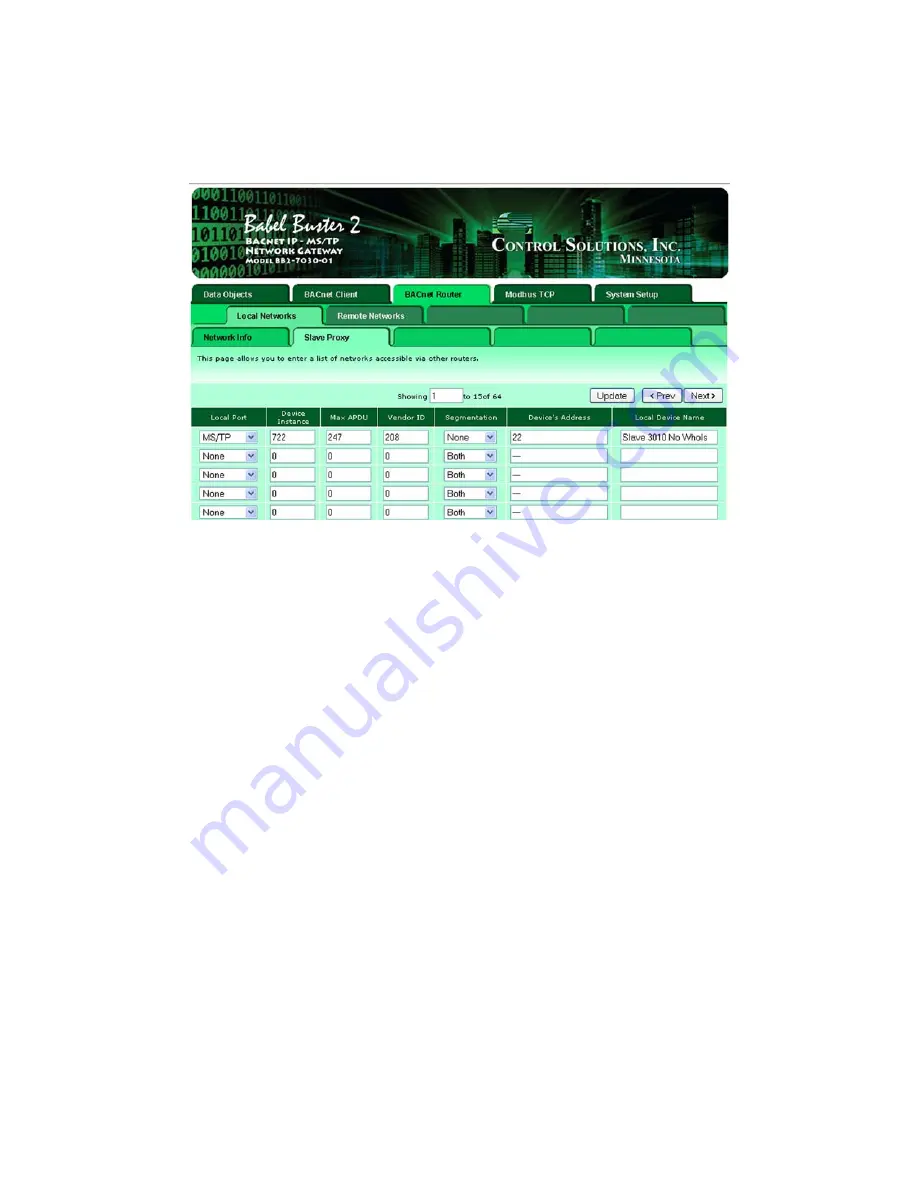
BB2-7030 User Guide – Rev. 1.0
Page 53
14.
Using
the
BB2
7030
Proxy
Support
This page allows you to provide Who-Is support (dynamic address binding) for devices that do
not natively support that feature. The BB2-7030 will respond with an I-Am message on behalf of
the device(s) listed above when a Who-Is is received. Traffic subsequently received from the
above devices will be routed as applicable. Therefore the BB2-7030 can be a proxy for a BACnet
IP device responding to a Who-Is from an MS/TP device, and vice versa.
Select the local port to which the device is physically attached. Slave proxy support can only be
provided for locally connected devices.
For each device that this BB2-7030 should be a proxy for, enter the applicable information in
each column. The device instance, maximum APDU size, vendor ID, and segmentation support
are all reported in a BACnet I-Am message. The local physical address of the device should be
given so that the BB2-7030 knows where to route traffice for this device when received.
If you do not know the maximum APDU size for your device, a size of 1476 is common for
BACnet IP devices, and either 240 or 480 are common for MS/TP devices. If unknown, it is
safer to go with a size that is too small than too big.
The device's address is NOT optional. You may enter the device's address as an MS/TP MAC
address, or an IP address optionally with port number. If no port number is given, the BB2-
7030's own local port number will be used. IP should be given in the form of
192.168.1.199:47808 (for example) or just 192.168.1.199. (The default port number for BACnet
IP is 47808 or 0xBAC0.)






























